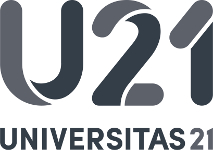UCD scientists lead €8m Horizon 2020 nanotechnology health risk study
Posted May 13, 2016
- Project will identify health hazards caused by nanoparticles entering respiratory system
- The study's results will establish the basis for the development of intelligent testing tools
A team of scientists at University College Dublin will lead an international research collaboration to develop methods of assessing the health and safety risks associated with engineered nanomaterials.
Nanotechnology involves the engineering of functional tools and systems at the molecular or nanoscale, which is about one to 100 nanometres. A human hair measures roughly 50,000 to 100,000 nanometres in diameter.
The project entitled ‘Smart tools for gauging nano hazards – Increasing the capacity to perform nanosafety assessment’ has been awarded €8m by the European Union’s (opens in a new window)Horizon 2020 programme.
Dr Vladimir Lobaskin, UCD School of Physics, will lead the research at UCD. He will be supported by Professor Boris Kholodenko, Deputy Director of Systems Biology Ireland at UCD, and Dr David Gomez, Systems Biology Ireland and the UCD School of Medicine.
Pictured right: Dr Vladimir Lobaskin, UCD School of Physics, will lead the research at UCD into identifying the health risks associated with nanoparticles entering the respiratory system
The project team will perform a range of tests – biological and computational – to identify the adverse outcomes caused by nanoparticles entering the human respiratory system.
The respiratory system is the main point of entry for nanodust into the human body. Various man-made fibres have been known to cause health hazards such as chronic lung and respiratory diseases.
Inhaled nanoparticles can also cause other kinds of damage when they accumulate in the kidney or liver, or cross the blood-brain barrier to enter the neural cells.
Most toxicity assessment methodologies used currently focus on measuring local and acute hazards caused by toxicants – foreign materials from man-made sources.
The project team proposes a conceptually new approach – a mechanism-aware toxicity screening – which is based on combining some of the recent achievements of systems biology, materials science and biophysics.
In their research programme, tracking the nanoparticles inside the organism and analysing their interactions with biomolecules and tissues will be used to produce a complete register of bionano interactions for each material. The key interactions will then be listed and characterised.
This will finally allow investigators to relate the physical and chemical properties of nanoparticles to the specific adverse outcomes and to single out the properties of concern.
The knowledge about the properties of concern and the biological mechanisms of the adverse effects will establish the basis for the development of intelligent testing tools. These tools will predict the toxicity of new nanomaterials even before they are produced, and will therefore reduce the need for animal testing in the future.
The UCD team will partner with researchers at: (opens in a new window)Stockholm University, Sweden, (opens in a new window)German Research Centre for Environmental Health, Munich, Germany; (opens in a new window)Danish National Research Centre for the Working Environment – NRCWE; (opens in a new window)French National Research and Safety Institute for the Prevention of Occupational Accidents and Diseases – INRS, France; (opens in a new window)Jozef Stefan Institute, Slovenia; (opens in a new window)Imperial College of Science Technology and Medicine, United Kingdom; (opens in a new window)University of Lorraine, France; (opens in a new window)Dassault Systemes Biovia Limited, United Kingdom; (opens in a new window)Finnish Institute of Occupational Health – FIOH, Finland.
By: Jamie Deasy, digital journalist, UCD University Relations






